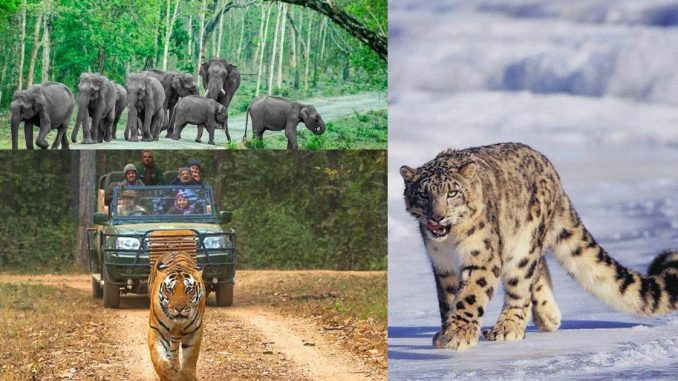
India is home to numerous national parks that showcase its rich biodiversity and natural beauty. Here are some notable national parks in India. These national parks showcase India’s incredible wildlife and natural landscapes, providing visitors with memorable experiences and opportunities to connect with nature.
Jim Corbett, Uttarakhand

Jim Corbett was a well-known British hunter, conservationist, and author who played a significant role in the establishment of protected areas in India. He is particularly associated with the Corbett National Park, which is located in the Nainital district of the Indian state of Uttarakhand.
Corbett National Park, previously known as Hailey National Park, was established in 1936 and was the first national park in India. It was renamed in 1957 in honor of Jim Corbett, who dedicated his life to wildlife conservation and the protection of endangered species.
The park spans across an area of approximately 520 square kilometers and is known for its diverse flora and fauna. It is home to several endangered species, including the Bengal tiger, Indian elephant, and Asiatic black bear. The park also supports a rich variety of bird species, making it a popular destination for birdwatchers.
Kaziranga National Park, Assam, A UNESCO World Heritage Site

Kaziranga National Park, located in the Indian state of Assam, is a UNESCO World Heritage Site and one of the most important wildlife conservation areas in the world. Spanning an area of around 430 square kilometers, it is known for its remarkable population of the endangered one-horned rhinoceros.
Established in 1905, Kaziranga National Park is situated in the floodplains of the Brahmaputra River and encompasses diverse ecosystems, including grasslands, wetlands, and dense forests. It is home to a wide range of wildlife, making it a biodiversity hotspot. Apart from the one-horned rhinoceros, the park provides habitat to other iconic species such as tigers, elephants, wild water buffalo, and swamp deer.
The park’s success in conserving the one-horned rhinoceros population is commendable. It is estimated that two-thirds of the world’s one-horned rhinoceroses reside in Kaziranga. Efforts by the park authorities, local communities, and conservation organizations have contributed to the recovery and growth of this species.
Visitors to Kaziranga National Park can enjoy thrilling jeep safaris and elephant rides to explore the park’s wilderness. The park also offers opportunities for bird-watching, as it is a haven for various bird species, including migratory birds that arrive during the winter months.
Sunderbans National Park, West Bengal – Famous as the fortress of the Royal Bengal Tiger

Sundarbans National Park, located in the Indian state of West Bengal, is a renowned UNESCO World Heritage Site and one of the largest mangrove forests in the world. This unique ecosystem is home to the majestic Bengal tiger and a plethora of diverse flora and fauna.
Covering an area of approximately 10,000 square kilometers, the Sundarbans National Park is situated in the Ganges-Brahmaputra delta and extends into neighboring Bangladesh. It is known for its intricate network of waterways, dense mangrove forests, and rich biodiversity.
The park is famous for its population of the endangered Bengal tiger, with an estimated 400 tigers inhabiting the area. Exploring the Sundarbans involves venturing through its winding rivers and creeks, where visitors can witness these elusive creatures in their natural habitat.
Hemis National Park, Ladakh – Globally famous for its snow leopards
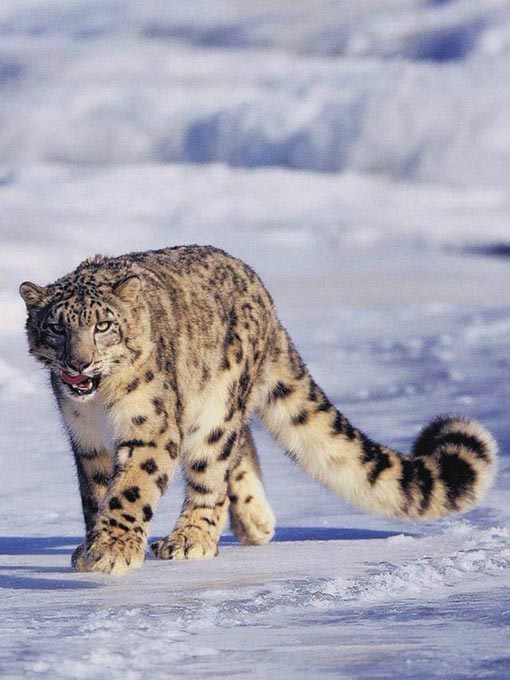
Hemis National Park, located in the picturesque region of Ladakh in India, is a captivating destination renowned for its rugged landscapes, diverse wildlife, and rich cultural heritage. Spread over an expansive area of around 4,400 square kilometers, it is the largest national park in South Asia.
Nestled amidst the majestic Himalayas, Hemis National Park is characterized by its dramatic mountain peaks, deep valleys, and high-altitude plateaus. The park is known for its unique blend of alpine and cold desert ecosystems, offering a habitat for a wide range of flora and fauna.
The park is particularly famous for being home to the elusive and endangered snow leopard. Hemis National Park boasts one of the highest densities of snow leopards in the world, making it a prime location for wildlife enthusiasts and researchers alike. Visitors have the rare opportunity to catch a glimpse of these magnificent creatures in their natural habitat.
Ranthambore National Park, Rajasthan
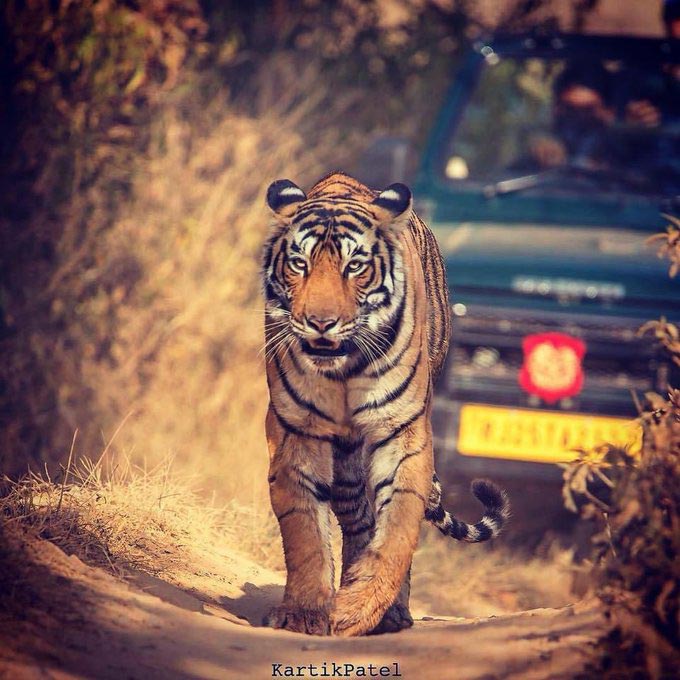
Ranthambore National Park, situated in the state of Rajasthan, India, is a renowned wildlife sanctuary and one of the most popular tiger reserves in the country. With its rich history and abundant wildlife, it offers a captivating experience for nature lovers and wildlife enthusiasts.
Covering an area of approximately 1,334 square kilometers, Ranthambore National Park is nestled in the Aravalli and Vindhya mountain ranges. The park’s centerpiece is the majestic Ranthambore Fort, a UNESCO World Heritage Site, which adds a historical charm to the surrounding natural beauty.
The park is famous for its population of Bengal tigers and is considered one of the best places in India to spot these elusive predators. Visitors can embark on thrilling jeep safaris and canter (open bus) safaris to explore the park’s diverse habitats, which include dry deciduous forests, open grasslands, and serene lakes.
Apart from tigers, Ranthambore is home to a variety of wildlife, including leopards, sloth bears, wild boars, sambar deer, and numerous bird species. The picturesque lakes within the park, such as Padam Talao and Malik Talao, provide a serene backdrop for wildlife sightings and bird-watching.
Kanha National Park, Madhya Pradesh

Kanha National Park, located in the state of Madhya Pradesh, India, is a renowned tiger reserve and one of the country’s most significant wildlife destinations. Spread over an expansive area of approximately 940 square kilometers, the park is known for its rich biodiversity and captivating natural beauty.
Established in 1955, Kanha National Park played a crucial role in the successful conservation of the Bengal tiger, making it a prime habitat for these elusive big cats. The park’s dense sal forests, grassy meadows, and serene water bodies provide an ideal environment for a variety of wildlife species to thrive.
Apart from tigers, Kanha is home to a diverse range of flora and fauna. The park is known for its significant population of spotted deer, also known as chital, as well as the barasingha, or swamp deer, which is a rare species found only in a few places in India. Other notable wildlife includes leopards, sloth bears, wild dogs, and numerous bird species.
Mudumalai National Park, Tamil Nadu
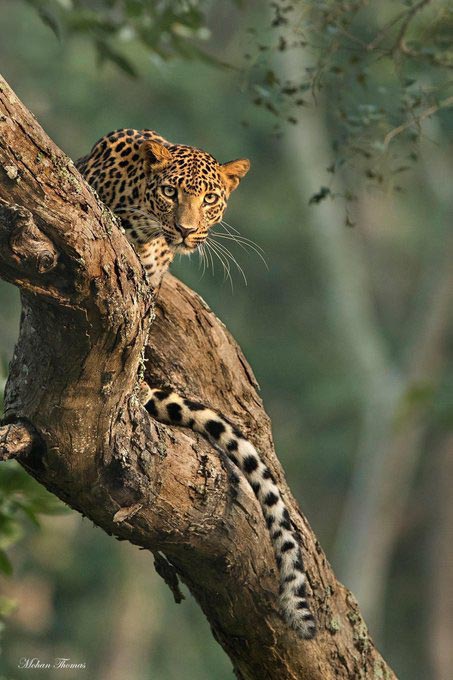
Mudumalai National Park, located in the state of Tamil Nadu, India, is a renowned wildlife sanctuary known for its diverse flora and fauna. Spanning an area of approximately 321 square kilometers, the park is nestled in the picturesque Nilgiri Hills and offers a captivating experience for nature lovers.
Mudumalai is home to a significant population of elephants, making it popularly known as an elephant reserve. Visitors to the park have the opportunity to witness these majestic creatures in their natural habitat. Apart from elephants, the park is also inhabited by numerous other animal species, including tigers, leopards, Indian bison, sloth bears, and several species of deer and primates.
Bandhavgarh National Park, Madhya Pradesh

Bandhavgarh National Park, situated in the state of Madhya Pradesh, India, is a renowned tiger reserve and one of the country’s premier wildlife destinations. Spread across an area of approximately 450 square kilometers, the park is famous for its rich biodiversity, scenic landscapes, and a high density of Bengal tigers.
Established in 1968, Bandhavgarh National Park has played a significant role in the conservation of the majestic Bengal tiger. The park’s dense forests, grassy meadows, and rocky hills provide an ideal habitat for these iconic big cats. It is known to have one of the highest tiger populations in India, making it a prime location for tiger sightings and research.
Apart from tigers, Bandhavgarh is home to a diverse range of wildlife, including leopards, Indian bison (gaur), sambar deer, spotted deer, and various species of birds. The park’s varied topography, comprising of forests, grasslands, and water bodies, supports a thriving ecosystem and offers abundant opportunities for wildlife enthusiasts and photographers.
Bandipur National Park, Karnataka

Bandipur National Park, located in the southern state of Karnataka, India, is a renowned wildlife sanctuary and one of the country’s premier tiger reserves. Spanning across an area of approximately 874 square kilometers, the park is known for its diverse flora and fauna, scenic landscapes, and successful conservation efforts.
Established in 1974 as a tiger reserve, Bandipur National Park is part of the larger Nilgiri Biosphere Reserve, a UNESCO World Heritage Site. The park is characterized by its lush forests, rolling hills, and serene water bodies, creating a picturesque setting for wildlife enthusiasts and nature lovers.
Bandipur National Park serves as a popular eco-tourism destination, offering a harmonious blend of wildlife encounters and serene natural surroundings. It provides a remarkable opportunity to experience the wilderness of India and witness the splendor of its diverse wildlife in their natural habitat.
Nagahole National Park, Karnataka
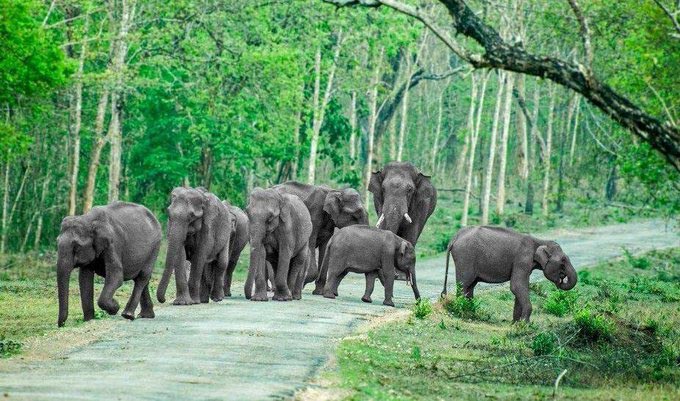
Nagarhole National Park, located in the southern state of Karnataka, India, is a renowned wildlife sanctuary and one of the country’s premier tiger reserves. Spanning across an area of approximately 643 square kilometers, the park is known for its rich biodiversity, scenic landscapes, and thriving wildlife.
Established in 1955, Nagarhole National Park, also known as Rajiv Gandhi National Park, is nestled in the picturesque Western Ghats and shares its borders with the neighboring state of Kerala. The park’s name, Nagarhole, translates to “Snake River” in the local language, referring to the winding streams that flow through the forested valleys.
Nagarhole is home to a diverse range of flora and fauna. The park boasts a significant population of tigers, making it a prime tiger reserve. Other notable wildlife species found in Nagarhole include Indian elephants, leopards, wild dogs, sloth bears, gaurs (Indian bison), sambar deer, and various species of primates and birds.
Tadoba National Park, Maharashtra
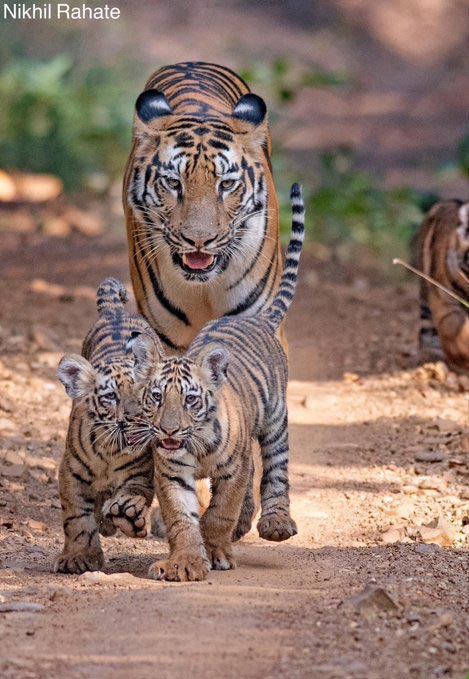
Tadoba National Park, located in the state of Maharashtra, India, is a prominent wildlife sanctuary and tiger reserve. Spanning over an area of approximately 1,727 square kilometers, the park is known for its diverse flora and fauna, picturesque landscapes, and remarkable tiger sightings.
Established in 1955, Tadoba National Park is situated in the Chandrapur district of Maharashtra. It is named after the Tadoba Lake, which serves as a vital water source within the park. The park’s terrain consists of hills, valleys, and dense forests, providing a thriving habitat for a wide range of wildlife species.
Gir National Park, Gujarat
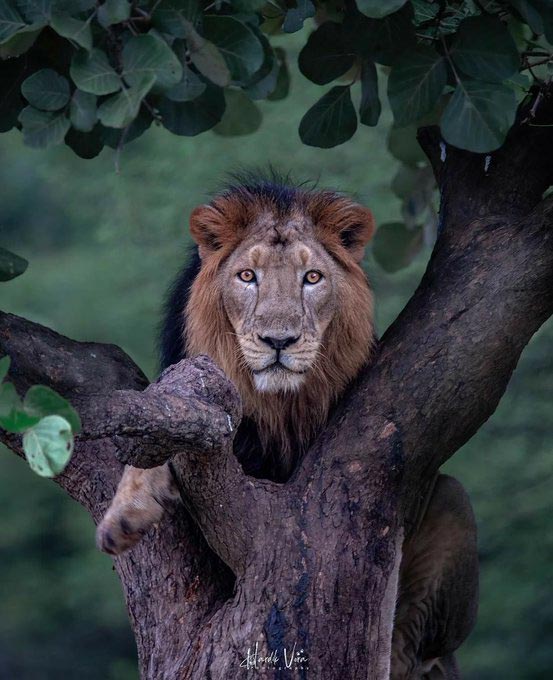
Gir National Park, located in the state of Gujarat, India, is a renowned wildlife sanctuary and the only natural habitat of the majestic Asiatic lions. Spread across an area of approximately 1,412 square kilometers, the park is known for its successful lion conservation efforts, diverse flora and fauna, and captivating landscapes.
Apart from the Asiatic lions, Gir National Park is also inhabited by other notable wildlife, including leopards, striped hyenas, sambar deer, spotted deer, four-horned antelopes, and various bird species. The park’s biodiversity is further enhanced by its rich vegetation, comprising of teak forests, acacia trees, and thorny scrub.
Visitors to Gir National Park can engage in jeep safaris and guided tours to explore the park’s wilderness and catch glimpses of the abundant wildlife. The park offers a unique opportunity to witness the behaviors and interactions of the Asiatic lions, creating a memorable wildlife experience.

Leave a Reply